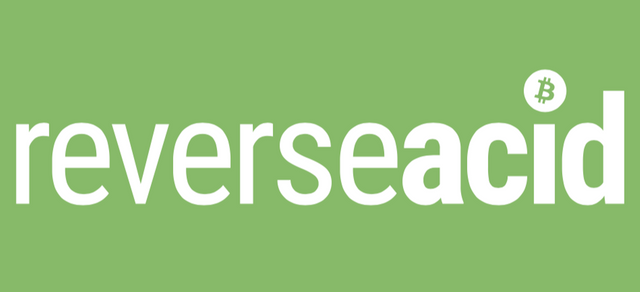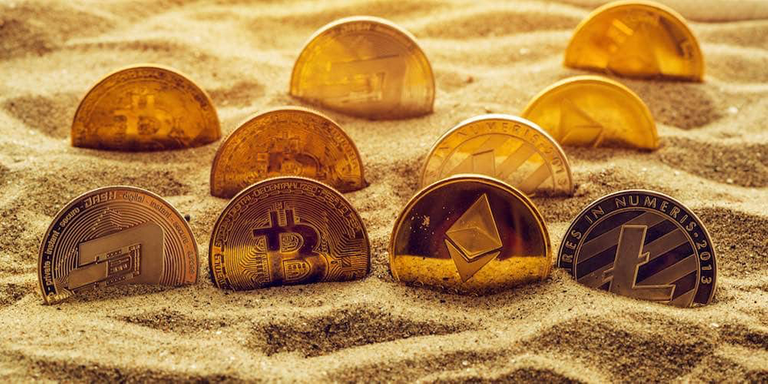Brief
A lot of conversation in the Bitcoin community is about block size and the fee schedule. On one side, we have the BTC community who believe the original Bitcoin is the only Bitcoin. Their goal is to move the narrative of Bitcoin from peer-to-peer cash to a global settlement layer. On the other side, there are big blockers of Bitcoin Cash and Bitcoin Satoshi’s Vision. From my perspective, Bitcoin and Bitcoin Cash are functional blockchains that legitimately try to optimally allocate resources and scale while Bitcoin SV is a chain that has essentially rolled Bitcoin back to a primitive version and increased the block size to 128 MB without understanding the limit as of now. Bitcoin Cash blocks are currently 8-32 MB as this isn’t too big to be redundant, but not too small to send transactions fees on an upward spike. Again, this is simply my perspective on the coins.
In this article, I’ll point out the arguments for Bitcoin as both; a global settlement layer and a peer-to-peer electronic cash system. This entire argument is meant to boil down to whether Bitcoin is a true store of value and ‘digital’ gold as most of the community claims it to be. For the sake of this argument, I’ll refer to each by their tickers (Bitcoin as BTC; Bitcoin Cash as BCH)
Global Settlement Layer
In August 2017, BCH forked off the BTC blockchain because of long-standing disagreements. The BCH faction wanted to follow the ideals set forth by Satoshi for developing P2P cash; the BTC community wanted to scale Bitcoin into a store of value. As a global settlement layer, BTC would have multiple layers on top of it with their own trustless verification and consensus mechanism. For example, the layer 2 solution in the form on the Lightning Network (LN) uses Hash Time Lock Contracts as a form of trustless transacting and consensus.
As a settlement layer, BTC would differentiate itself by being secure, immutable, and completely transparent – completely unlike settlement layers of today. As a decentralized database upon which we base global transactions, it would mean nobody could cheat anyone, nor can they hide any transactions they wish to conceal for the public eye. This will create a shift in the power narrative of finance, allowing individuals to no longer suffer from asymmetrical information with regards to financial capabilities. By building a settlement layer, everyone would have to build on the BTC chain, but this something difficult to do considering the community’s preference for infrequent updates. The real problem is that it will be difficult for a decentralized settlement layer to gain widespread adoption as the financial institutions that exist today will be extremely reluctant to shift from a method of transacting that preserves their oligopoly.
If Bitcoin was to truly evolve into a global settlement layer, it would have to build capacity to host thousands upon thousands of layer 2 protocols. How would this be possible when the current limit on transactions with a 1.4 MB block size is a mere 3,000 transactions per block (10 minutes)? The answer is both simple and tricky. Simply put, the layer 2 chains are meant to be scaling solutions in themselves. With verification and consensus taking place on a separate layer, it creates room for the main chain to not get clogged with the increasing number of users transacting. But at the same time, as a layer 2 protocol, it means these transactions will eventually have to be confirmed on the main BTC blockchain to be valid – something that prove very difficult once the number of transactions on the various layers starts to exponentially rise.
All of these transactions on the second layers will slowly move down to the main chain and end up clogging it. The mempool is bound to exponentially increase and render the main chain unusable in itself. The entire point of a global settlement layer is for downward transactions to get cleared quickly as well. In order to truly be a settlement layer, BTC will have to implement a transaction size reducing protocol like SegWit and bloXroute or they’ll have to increase the block size. On the flipside, if the channels on Lightning and the other layers of BTC stay perpetually open, there is no need for it to be cleared on the main BTC chain.
My personal view is that in order for this model of scaling to work, the consensus and verification mechanisms on the various layers must be immaculately designed. Not to take anything away from the brilliant work done by the Lightning developers, but the protocol can be optimized. Thankfully, they are working on making Lightning more efficient and user friendly, starting with the launch of their recent non-custodial Lightning app.
Peer-to-Peer Electronic Cash
While Bitcoin is developing itself to become a global settlement layer, Bitcoin Cash is trying to create a peer-to-peer system that keeps the perception augmented by Satoshi in the Bitcoin whitepaper intact. The focus of Bitcoin Cash is to create a self-sustaining financial system where the users are supreme and no central authority has sufficient power to truly change the rules of the network – just like BTC.
This goal aligns with the initial cypherpunk and anarcho-capitalism principles that Bitcoin was invented based on. With an aim to harbor financial inclusion and create a more open, transparent, and less corrupt financial system, Satoshi Nakamoto coded Bitcoin and set forth the initial thought principles by which it would be guided.
BCH has been met with extreme hostility from the BTC camp, under allegations of trying to “scam” newcomers into buying BCH over BTC. As all stories do, this is one has two sides with merits and criticisms on both ends – but that’s for another post.
The goal of BCH is to create a system of P2P transactions for people like you and me to easily exchange value with one another. While BTC is trying to revolutionize the global economy by becoming a global settlement layer, BCH targets the ground layer of a decentralized economy by introducing a system with zero confirmation (instantaneous) transactions with a near zero fee. To think of it in a context that is comprehendible relative to the current economic system; BTC is the entirety of the banking system while BCH is USD, EUR, and GBP. One provides a base for settling transactions from across the world on one immutable ledger, while the other provides a mechanism for regular people to transact with high efficiency and low cost.
Translating the Mess
In conclusion, it should be fairly obvious by now that maximalists on either side are being intellectually dishonest by being overly biased with one coin and refusing to acknowledge the potential for a decentralized economy, backed by various cryptocurrencies and utility tokens. To be frank, BTC maximalists are much more biased and unwilling to see a fresh perspective than BCH maximalists. In fact, a main criticism of BCH from both BTC and BSV proponents is their lack of apprehension to altcoins – especially Ethereum.
If you aren’t being open minded in an industry of nascent technology and rampant innovation, you are missing out on the big picture due to false narratives fed to you by a group. While it is true that most altcoins are indeed useless, the objective of maximalism to deem all altcoins worthless and BTC as the only worthy chain for development. In short, a working product and continued results, no matter how gradual, are signs of development and the willingness of the core team to actually create a high efficiency end product for their users.
In short, BTC and BCH can both co-exist as they exist for different reasons. BTC’s answer to high efficiency, low cost P2P transactions is the Lightning Network. In all honesty, the Lightning Network is neither as fast nor as reliable as the BCH chain. This is because of the dust limit criticism put forth by Peter Rizun, detailed in the layer 2 scaling post.
So as an uncertain yet opinionated conclusion, my view is that BTC as a settlement layer represents the entire banking system or the main underlying database for SWIFT. BTC is a store of value because it is a piece of key financial infrastructure, but to liken it to gold simply for this seems to be an inadequate argument from my point of view.
- AB
ReverseAcid Monthly Recap
- ReverseAcid Monthly Recap - November 2018 (Vol 1)
- ReverseAcid Monthly Recap - December 2018 (Vol 2)
- ReverseAcid Monthly Recap - January 2019 (Vol 3)
- ReverseAcid Monthly Recap - March 2019 (Volume 4)
Crypto Analysis Series
- Part 1 - Basic Attention Token and How It's Revolutionizing the Internet
- Part 2 - Golem Network Token as a Potential Giant Killer
- Part 3 - Augur and the Future of Decentralized Predictions Markets
- Part 4 - Dogecoin - Such Meme, Much Value
- Part 5 - Zilliqa
- Part 6 - IOTA
- Part 7 - NEM
Previous Posts
- Part 7 - NEM
- Oracles and their Inherent Censorship Problem
- Steem - A Fertile Ground for dApps Growth
- The Advent of Cryptoeconomics - Why Traditional Economics Is In Danger
- Why Do Smart Contracts Need a Blockchain
- Layer 2 Protocols: Functionality as a Mode of Micropayment
- Layer 0 Protocols: The Key to Scaling Crypto for the Masses
- Diving Deeper into Zero-Knowledge Proofs (Part 2)
- Bitcoin’s Innate Problems: Volatility and Mining Centralization
- Legislation and Taxation of Cryptocurrencies - A (Very) Brief Outlook
- CME Futures and Dealing With Volatility
- Two Men on an Island - An Introduction to Zero-Knowledge Proofs and What Follows (Part - 1)
- Why Unveiling Fake Volume is Essential for Market Growth
- Understanding the Difference Between an ‘Open-Community’ and ‘Closed-Network’ Blockchain
- Operational Difficulties in Running a Cryptocurrency Exchange
- Dharma Protocol: Tokenized Debt and Funding Through Decentralized Systems
About Reverse Acid

Be a part of our Discord community to engage in related topic conversation.

Follow our Instagram and Twitter page for timely market updates



Hi @reverseacid
It's so strange, that some really intelligent people stuck with that mindset and they cannot accept, that there is more than one "truth" about Bitcoin. And those who want to use crypto as a way of payments, are going to "fight against the odds".
I rather like to think of BTC and many other tokens as of a Store of Value. It's so clear that banks and authorities will not support idea of btc being a form of currency, but they seem to be really open with idea of using this technology to raise money by start-ups.
Yours,
Piotr
As the term "fork" implies, both BTC and BCH can be seen as continuations of the original bitcoin path. Adherents of both coins claim to be the "true" coin, but both of them have advantages and disadvantages.
Of course, none of us know if any coin will become predominant, and if so, which one. But we can be sure that the value of BTC, BCH, and many more coins will continue to increase. Probably rapidly, and apparently soon!
It'll be an interesting ride ... to the moon ... regardless of which "crypto-space-ship" we are riding in.
Hello @reverseacid!
I had a hard time understanding this post. It's not easy to digest. I thought BTC and BCH had the same function, to serve as an economic medium or a means of value. I've never studied any of those blockchains in depth.
Would you mind explain to me a little more, aren't they represent a store value?
Thanks for sharing
Congratulations @reverseacid! You have completed the following achievement on the Steem blockchain and have been rewarded with new badge(s) :
You can view your badges on your Steem Board and compare to others on the Steem Ranking
If you no longer want to receive notifications, reply to this comment with the word
STOPTo support your work, I also upvoted your post!
The reason they can no coexist is due to the mining.
If they keep both sharing sha256 the risk to the small chain increases majorly.
Unless one either switches or merged mining is done the POW of the minority chain is at risk.
That being said checkpoints while being centralized could protect the smaller chain....
When ASIC are in the game-the game theory of POW coin changes to the best fit.
Why do you assume that payments channel will be closed?
The main goal of the LN atleast on the BTC side is for the LN to be kept opened.
A LN channel is a free market approach and people will open and close channel it it benifts them,
If they want to covert to onchain bitcoin to LN btc and viceversa they can use a Sub swap.
Do note you don't need a fork to scale the LN future.
Hyperloop allows 3 billion LN channels to open a year in the current state of Bitcoin with no Taproot and such(plus at bare max).
Splicing allow a individual user to close and open channel the same time in on tx.
LN factory and Statechains allows to move the LN channel creation in third and fourth layers...
Each with the pros/cons but all keeping the noncustodial nature.
I do note the dust limit attack while real can mitigated and secured with various LN tech. For one Watchtower should provide enough security to prevent fraud of dust tx.
And here are some ways to solve this issue:
https://bitcoin.stackexchange.com/questions/85650/htlcs-dont-work-for-micropayments/85694